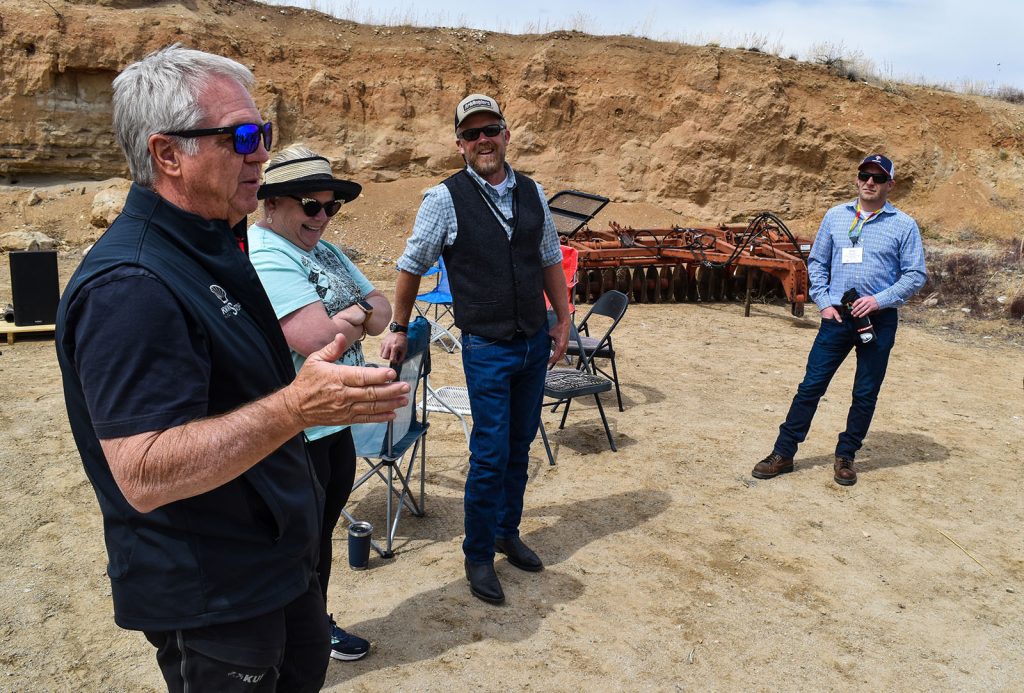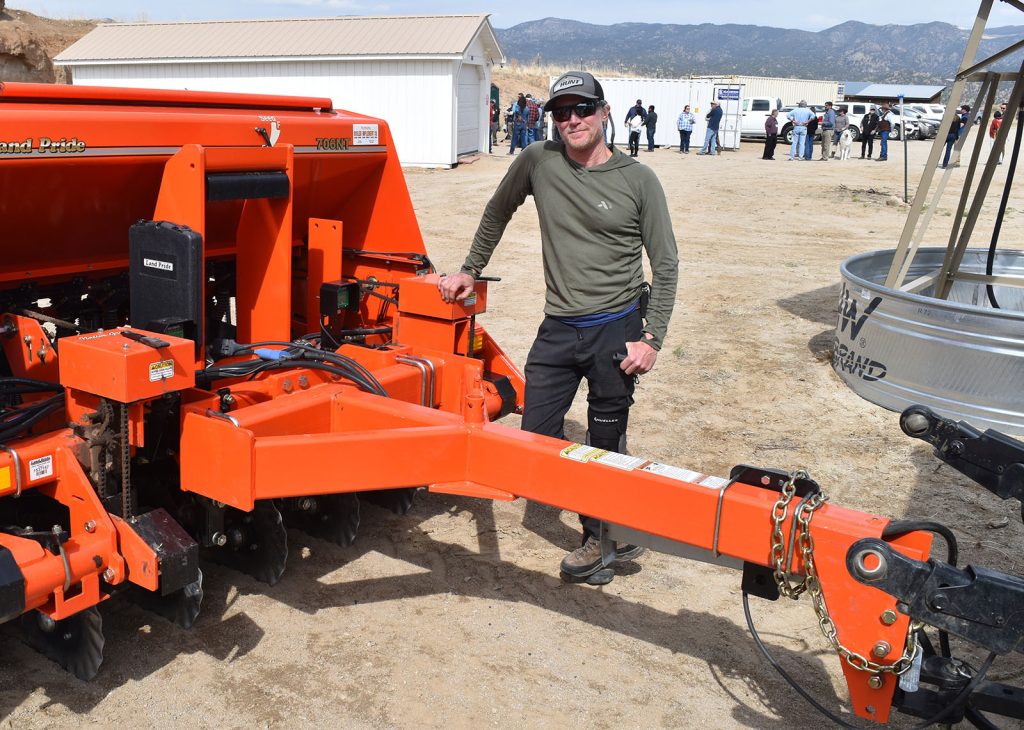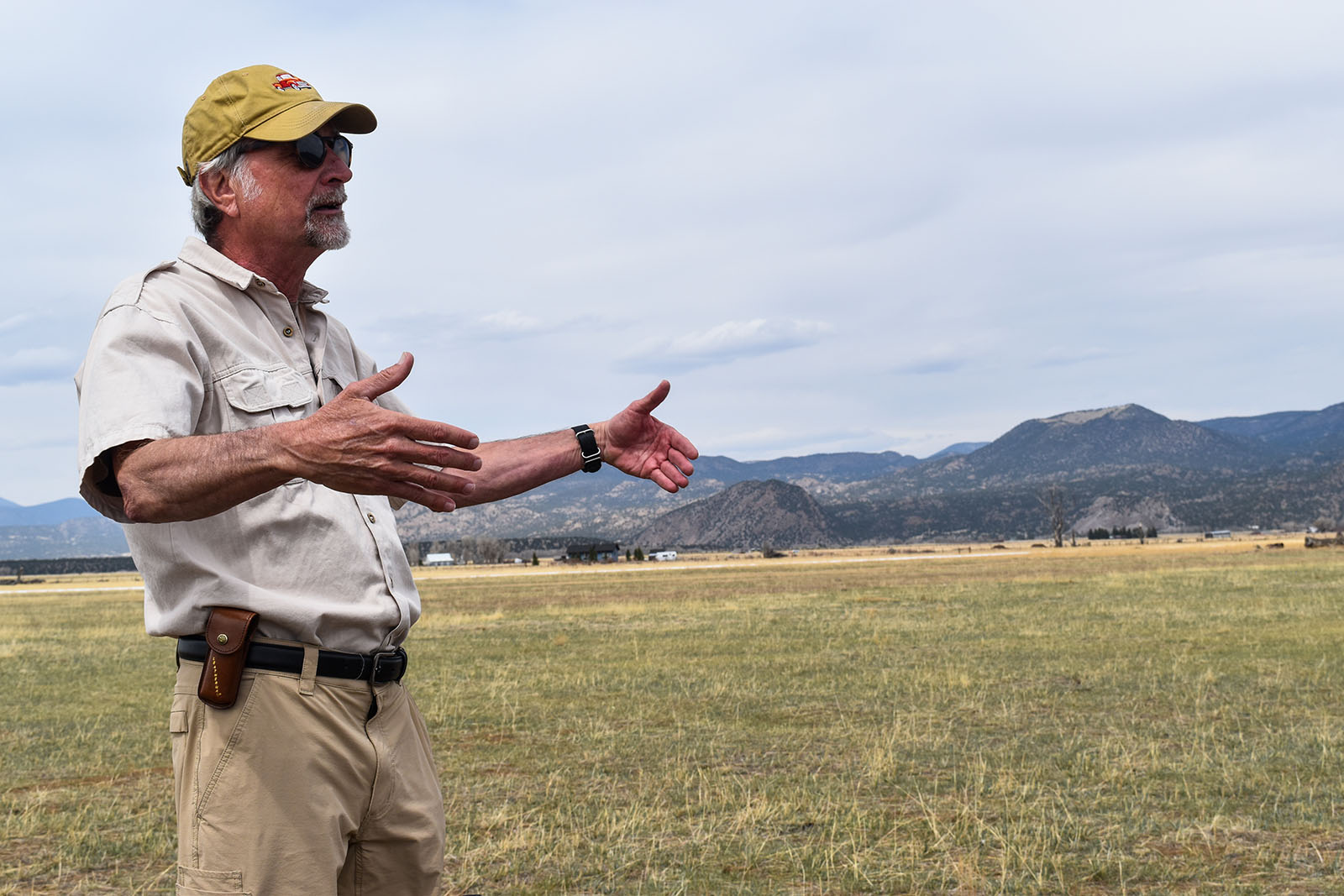Anyone who’s driven Highway 285 from Salida to Buena Vista has seen the Hill Ranch as they pass under steel pipes, descend the big hill toward Nathrop and enjoy the view of Mt. Princeton.
Almost all of that bottomland stretching to Chalk Creek was once the Hill Ranch. For over 100 years, the 1,400-acre spread fostered the illusion of a lush landscape in the high desert, with irrigation creating emerald fields of hay and alfalfa each spring. In more recent years, the ranch became a dusty breeding ground for tumbleweeds that clogged neighboring ranches’ irrigation ditches.
The 2022 Arkansas River Basin Water Forum featured a tour of the Hill Ranch, which offers a 21-year history lesson for cities, counties, farmers and ranchers attempting to navigate the uncharted territory of diminishing water supplies combined with increasing demand from growing cities. Those lessons featured prominently during the Water Forum tour, held in Salida this year.
The Pueblo West Metropolitan District bought the Hill Ranch water rights in 2001 to help meet its municipal water needs, but the District has yet to meet Water Court-decreed conditions that would allow Pueblo West to use the water.
Doug Proul, board president for the Pueblo West Metro District, said, “We usually start off our presentation with, ‘We’re going to take about 20-25 minutes to tell you how not to buy water rights. You don’t buy the water without buying the ranch.’” By the time Pueblo West bought the ranch’s water rights, the property had been subdivided. “Now we have to revegetate with 33 property owners instead of one.”

Further complicating the issue, “In the ’80s, the family had sold the water to a water broker, who leased the water back to them, so the water was already separated from the land,” said Chaffee County Commissioner Greg Felt. Along the way, parcels started being sold off, and because they were 35 acres or larger, “they didn’t have to go through the county subdivision process.” In other words, most of the new landowners were unaware of the Water Court decree requiring that the land be revegetated.
When Pueblo West went to Water Court to change the use of the water, the county commissioners at the time needed to look no further than the Goodwin Ranch in Howard to see that taking the water off 1,400 acres would have significant impacts to neighboring ranchers. So, Chaffee County negotiated a requirement for Pueblo West to revegetate the land with native grasses.
Proul noted that the Water Court decree was issued in 2010, but Pueblo West has yet to meet the revegetation requirement and, therefore, cannot use the water to which it owns the rights. The Chaffee County Commissioners “agree with us that we need to figure out how to get this done so we that we can get the water we bought.”
Commissioner Felt identified two major challenges: “reluctant landowners … and 400 acres of peat.” Dense peat developed because the ranch was irrigated year-round for over a century, and grass won’t grow in pure peat. “How do we deal with this situation of people who just absolutely don’t want to be revegetated? How do we deal with these areas that probably just can’t be revegetated?”
Initial efforts to revegetate the land failed mainly due to a lack of understanding of the unique challenges presented by the ranchland. Eventually, Pueblo West contracted with Dr. Paul Flack of Resource Based International to direct revegetation efforts at the ranch.
Flack spoke about his work for Pueblo West from the edge of a field that had been successfully revegetated. “This field was basically a barren landscape. We didn’t have anything out here but weeds in 2019.”
The native grasses require favorable water conditions to become established, but “it has to be sustainable once we turn the water off,” Flack said. “That’s what this field has accomplished since 2019. There will still need to be weed control.”
The 80-acre field, just beginning to turn green, is in its second year without irrigation, Flack said. “We did weed control, cleaned it up, but in terms of tilling or anything like that, we just (planted) with the (no-till) drill.”
Hill Ranch Foreman Matthew Coen is boots on the ground: “We take approximately 160-200 acres every year as our project site. So, 1,400 acres, it’s a seven to 10-year scope on the project.” He plants cool- and warm-season native grasses in various proportions depending on the characteristics of the field in question.
Coen called the no-till drill he uses to sow the native grass seeds “the coolest seeder in the world. … These seeds need to be put precisely just a quarter or a half inch into the ground and no more. So this is a really precision machine that does that for us.”

Since the grasses need water to get established, the ranch employs a mobile irrigation system using its Willowdale Ditch rights, diverted from Chalk Creek. As Coen pointed out, “These grasses have been here for thousands of years, so they should sustain” once irrigation water is removed from the land.
“We have lots of challenges,” Coen added, referring to peat up to 14 inches thick. “We’re headed into the worst part of the ranch, and we’ve really perfected our techniques … . Last year we started doing test plots in the peat, getting in there with a disc ripper, breaking up that peat, getting the mineral soil exposed and planting in that. We have really good establishment in the experimental plots we did last year, so we feel like we’re ready to take it on.”

In light of the challenges facing Pueblo West’s efforts to meet the requirements of the Water Court decree, Commissioner Felt suggested a collaborative solution that protects Chaffee County residents and ranchers but revises revegetation requirements to allow Pueblo West to use the water that it purchased more than 20 years ago.
He suggested going back to Water Court “hand-in-hand with Pueblo West … to potentially amend the decree, amend our agreement that we have with them, and come up with a solution that, maybe in exchange for allowing some of the land to not be revegetated … we develop maybe a little more long-term support … to continue weed maintenance and eradication.”
Felt continued, “I think the real victims here … are some of the ranches that surround this (ranch) that are dealing with a lot of tumbleweeds. … It’s just a really challenging situation … . So really, Paul and his team, I think, have been making good progress. It’s difficult to demonstrate that in April. … If you’re here in July, it’s green, and it’s grass, not weeds.”





